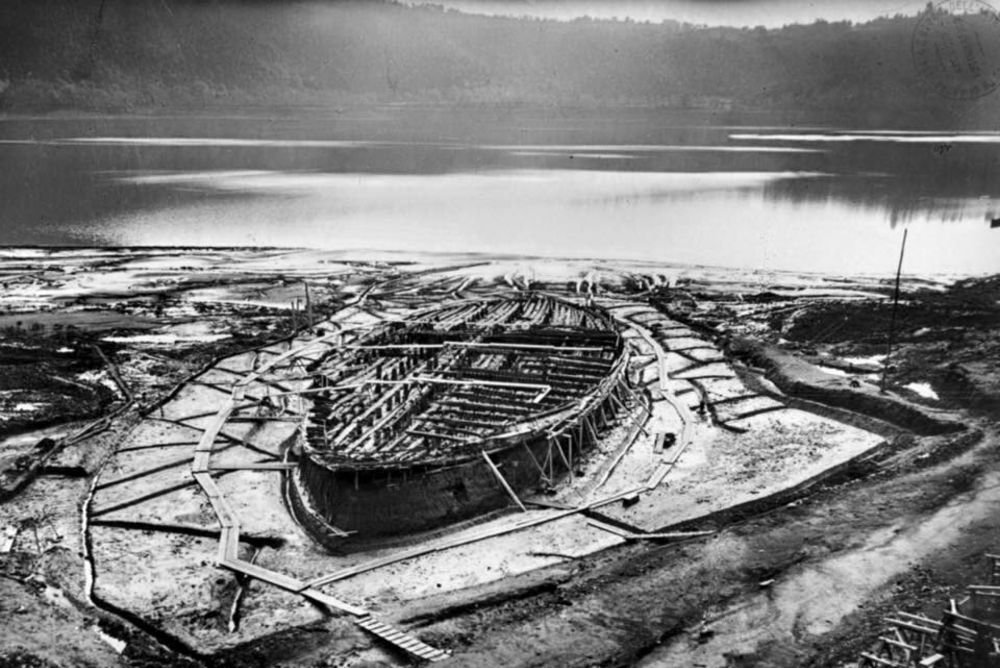
In the depths of Lake Nemi, beneath the skies of the Roman Empire, two great ships were built in the first century AD during the reign of Emperor Caligula, reflecting the extent of luxury and innovation of that era. The larger of these was not just a vessel, but a true floating palace, equipped with everything from marble and mosaic floors to heating and internal plumbing systems, and even baths.
For centuries, these ships were the subject of admiration and curiosity among local fishermen. In the 15th century, their existence was highlighted by Cardinal Prospero Colonna and Leon Battista Alberti, who found the wrecks at a depth of 18.3 meters under the water’s surface, a depth considered too deep for extraction at the time.
Everything changed in 1927, when Italian dictator Benito Mussolini ordered the draining of Lake Nemi to recover these sunken treasures. The recovery process took several years, filled with challenges and obstacles, from mud eruptions to collapses in the lake bed, and was not completed until 1932.
The first ship was 70 meters long and 20 meters wide, with a hull divided into three main sections. The second ship, larger in size, was 73 meters long and 24 meters wide. Both ships demonstrated an advanced level of engineering and naval design, employing the Vitruvian method of construction, a traditional Roman building technique that focused on the ship’s external structure.
On the night of May 31, 1944, during World War II, these ships were completely destroyed in a tragic fire. American army shelling caused minor damage to the museum housing the ships, but ultimately forced the German forces to withdraw from the area. Shortly thereafter, a massive fire broke out, destroying these historical treasures.
Despite the destruction that befell the ships, some bronzes, charred timbers, and some materials stored in Rome survived the fire. This destruction led to a halt in research until the 1980s. The museum was restored and reopened in 1953, and one-fifth scale models of the ships were built in the naval shipyard in Naples. These models, along with the remaining artifacts, are on display today, offering a unique view of Roman naval engineering and design, and the luxurious life of that era.
The Nemi ships stand as a living testimony to the advanced engineering and craftsmanship of the Romans. Their discovery and study highlight the importance of maritime archaeology in understanding Roman history and technological innovations of that time. The ships not only represent high artistic skill but also reflect the desire for luxury and comfort that was a prominent feature of the Roman elite.
While the original ships remain lost under the waves of history, the reconstructed models and recovered artifacts provide a valuable window for modern generations to explore and appreciate the greatness of this Roman legacy. Through these discoveries, we can appreciate the depth and complexity of art and engineering in the ancient world.
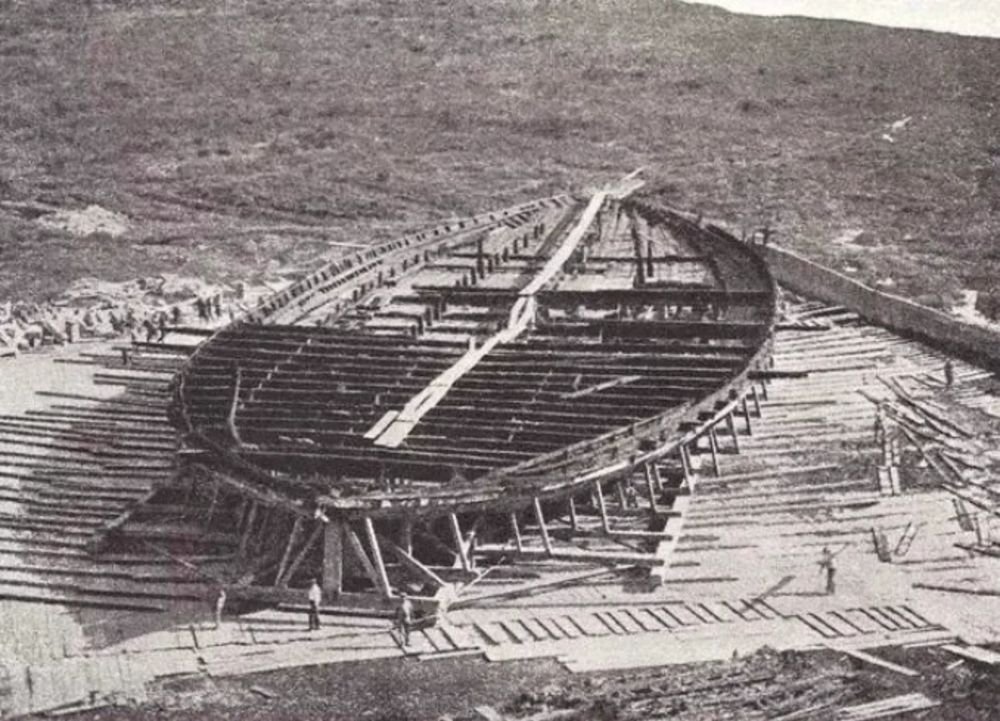
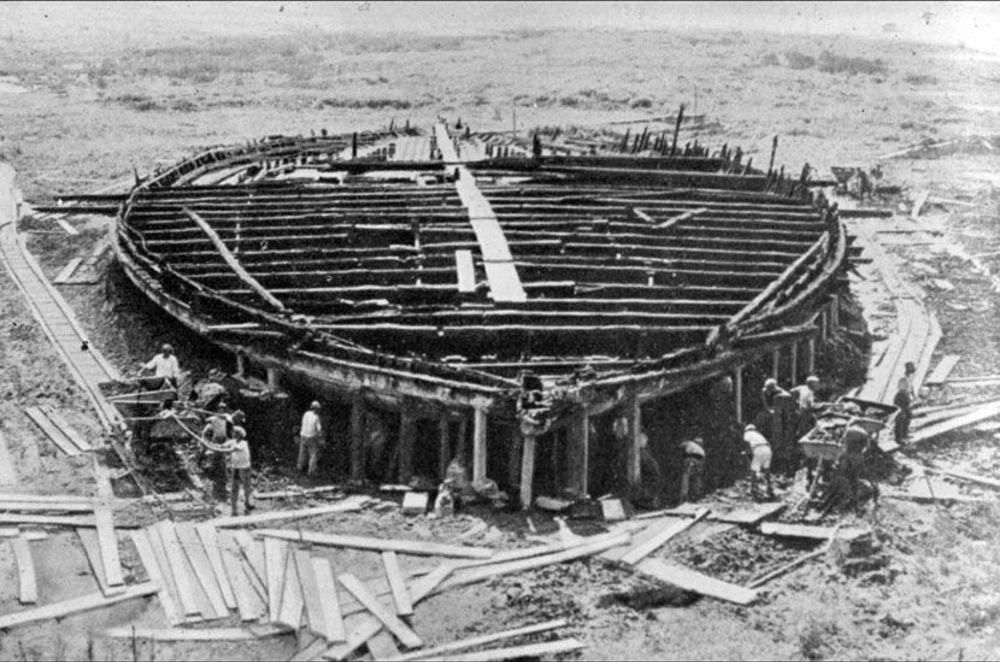




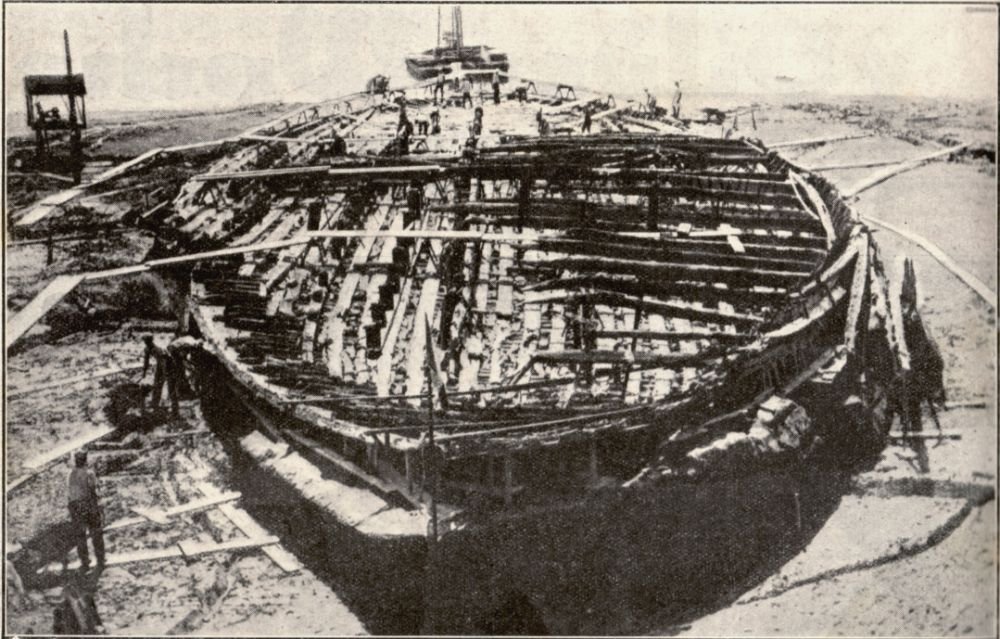
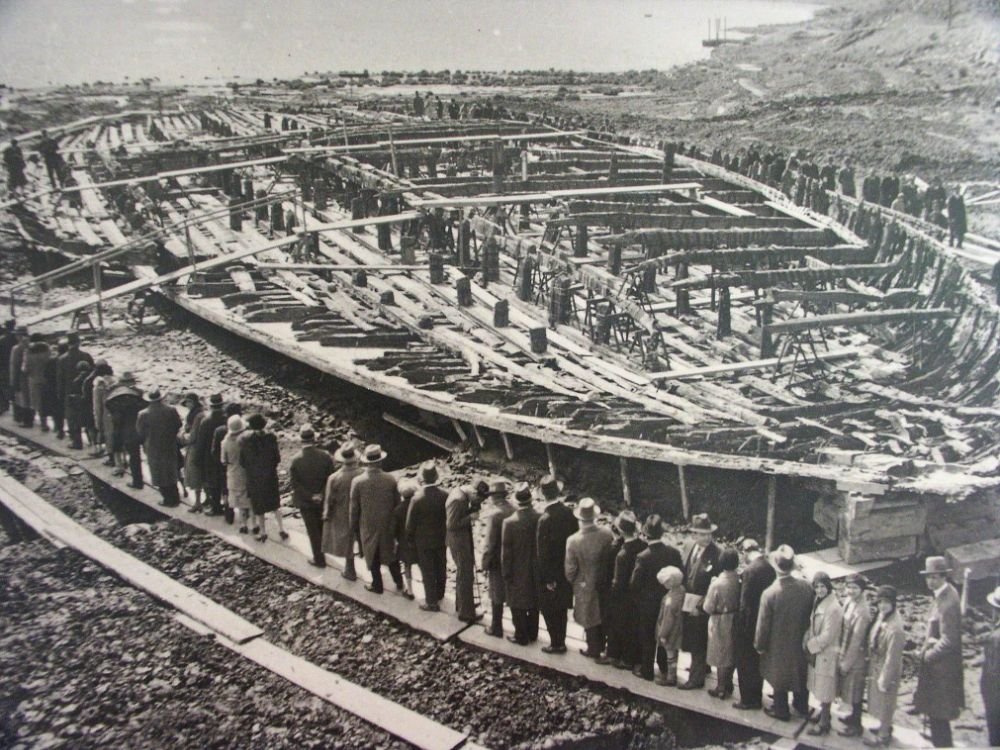
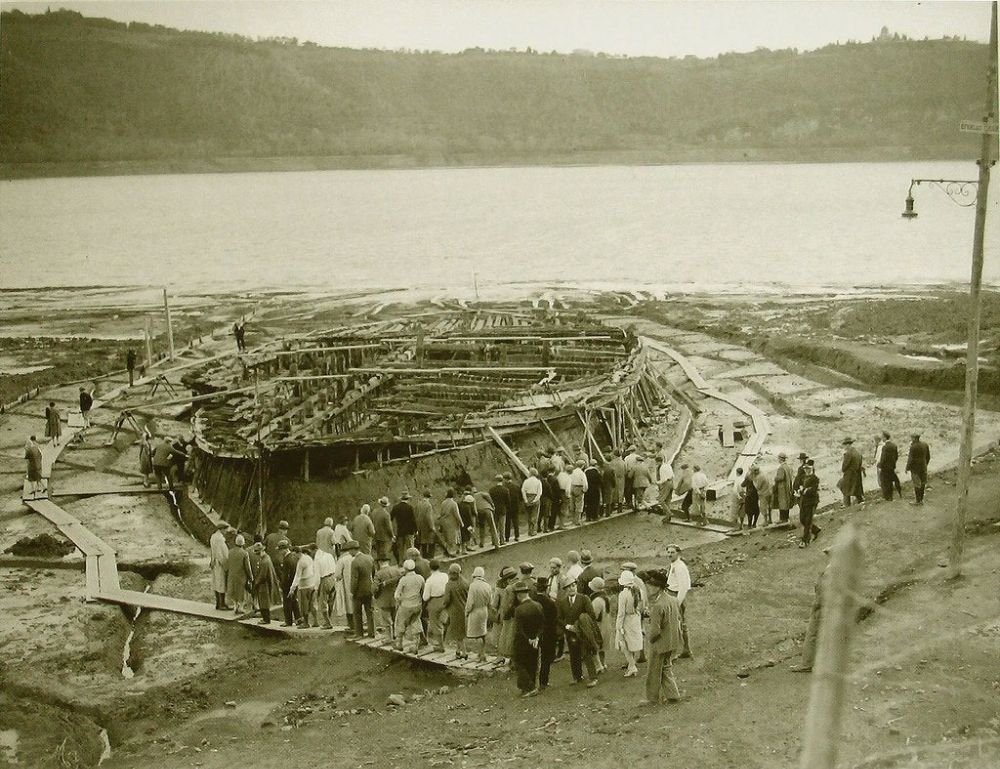

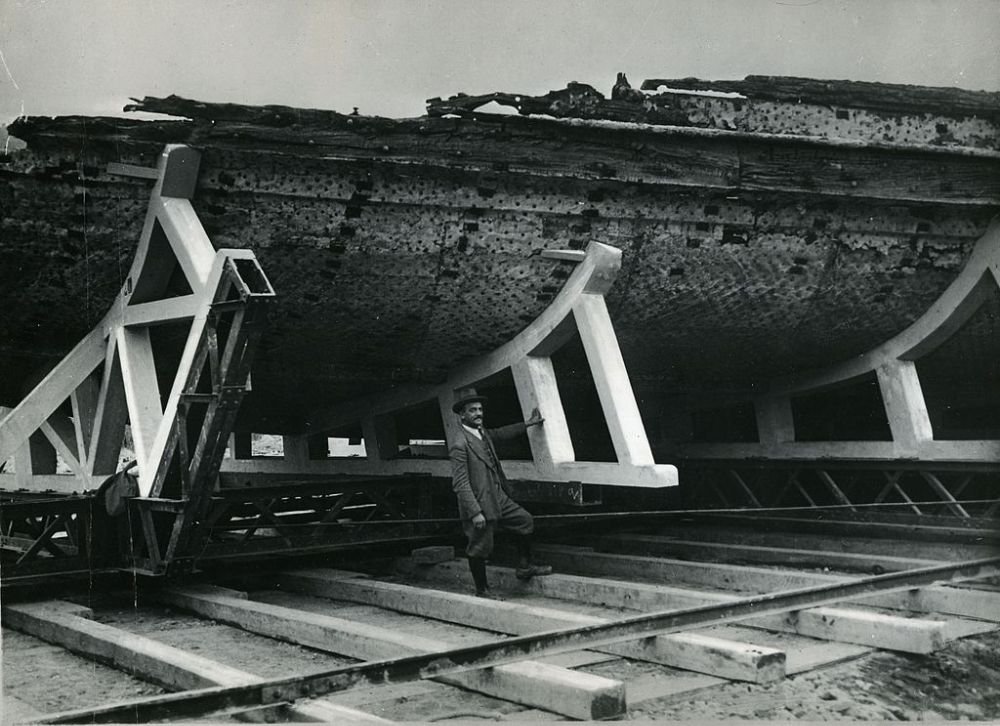
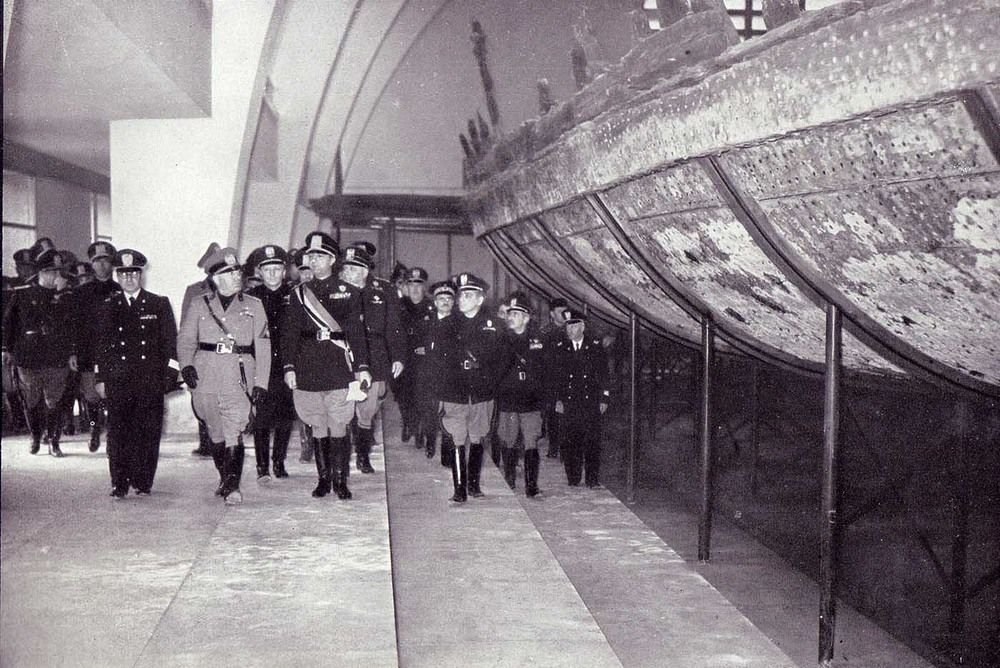
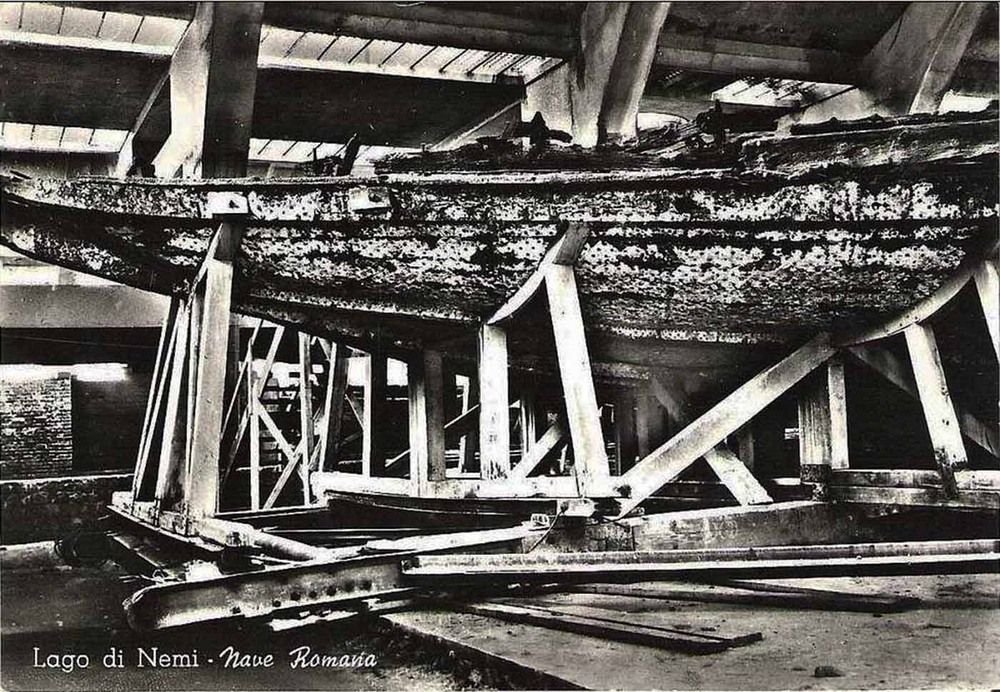
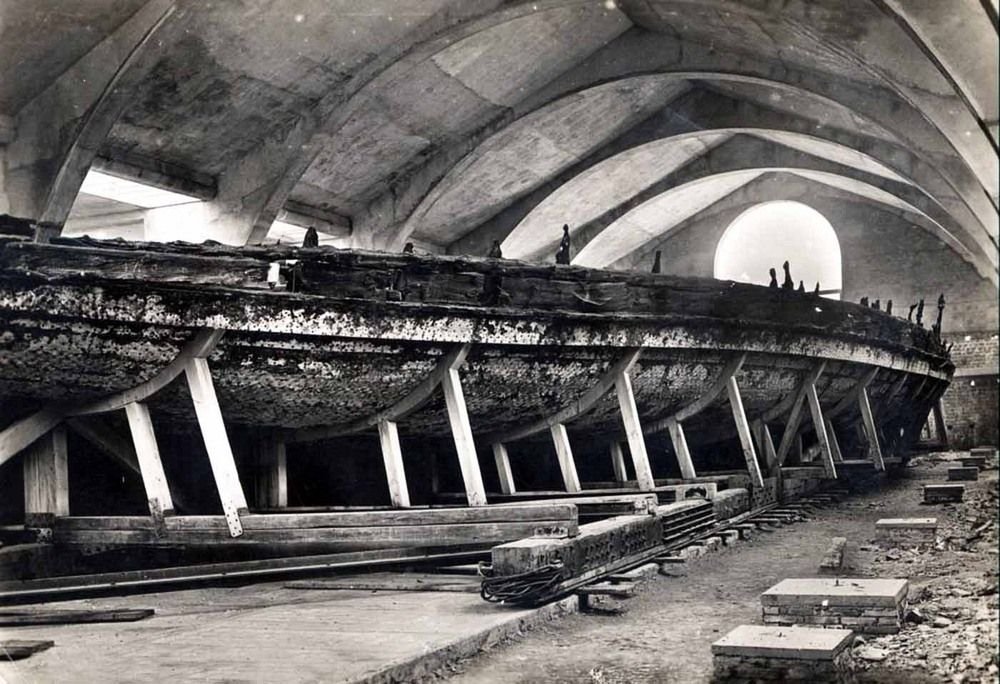
Discover more from History in Pictures
Subscribe to get the latest posts sent to your email.